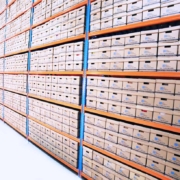Is logistics customization not too expensive?
In the discussion [1] about the future of supply chains, the leitmotif is that the consumer fully specifies his product digitally, has ordered it and wants to collect it at a dynamic location. Do we still maintain an affordable supply chain?
Focus on volume.
in recent decades, the focus on volume has been one of the key strategies to keep unit costs as low as possible. In warehouses too great a differentiation at SKU level is not only handling technically a difficult story, but often also a costly affair. Many organizations are slowly turning back the clock from custom logistics to more standards.
Stock!
In the article [2] of Ir. Léon Peters and Dr.ir. Rob van Stekelenborg, there are a number of important starting points to realize a high service at a low cost. The correct decoupling stock plays a crucial role in this. Often order fluctuations are passed on while using the decoupling stock could have solved the problem.
The other important element that both gentlemen draw attention to is differentiation of management. This is not only about cooperation in the chain, but also about laying down the responsibilities of production and distribution back in the line.
Financial management
Many logistics managers still do not know what the Cost to Serve are. Due to the cost distribution across multiple departments, merging and arriving at a specific cost price is still a crime. As an alternative, people often use an average cost price, where they have no insight into the distribution of the average. As a result, many unnecessary costs remain hidden.
What is often lacking is a good analysis of the financial structure of the supply chain. It is not uncommon for raw materials, semi-finished and finished products to be over-financed and often double-covered in the chain. Eliminating accounts receivable positions and a clear cash flow strategy throughout the chain can yield significant savings. Cooperation between financiers, banks and logistics providers in the chain can achieve such an improvement.
Consumer participation.
But why would we as companies want to do everything ourselves? Is it really necessary that you supply each customer in a specific street or district yourself? In many neighborhoods, it is common for citizens to shop for each other or take them from the supermarket. Why don’t supply chains tap into this potential?
Now that customers are picking up their products at more and more locations and static collection points are becoming dynamic, an extremely dense distribution network is being created. If day and evening deliveries to your home are added, the drop frequency increases and day-to-day demand results in upward pressure on distribution costs.
In addition to demand, the consumer can also move up the chain via distribution. Who develops an app that connects local citizens, cumulate their question and alternately request the nearest person to take the products to the collection point? By communicating the demand generated via the app in the supply chain in real time, this can be responded to in a timely manner. It also provides a better picture of where which demand arises during a certain period [forecasting]. Part of the cost savings on distribution can then be returned to the customer to keep this form of distribution attractive.
1) http://www.logistiek.nl/social/supply_chain_management/vragen/627?cmpid=NLC|logistiek|2014-10-31|Hoe_ziet_de_supply_chain_van_de_toekomst_eruit?
2) https://www.managementsite.nl/hogere-service-n-lagere-kosten









